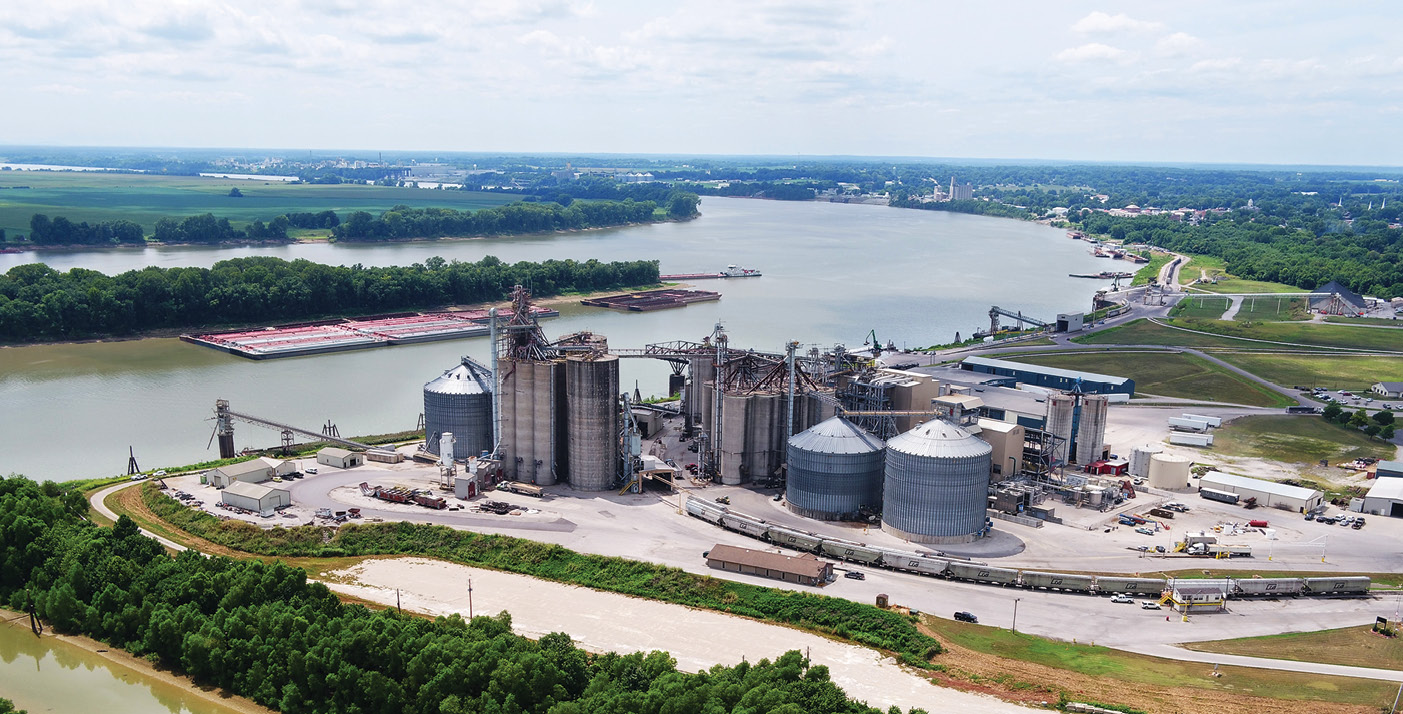The United States Marine Highway Program (USMHP) is a lot like a plumber on the weekend: The price seems high, but the relief provided by unclogging the system is more than worth it.
“Waterborne Competitiveness: U.S. and Foreign Investments in Inland Waterways,” published in 2022 by the Eno Center for Transportation at the Center for International Trade and Transportation (CITT) at California State University, Long Beach, noted that the 12,000-mile U.S. inland waterway system moves more than 500 million tons of construction, energy, manufacturing, chemical, and agriculture products annually. But it’s plagued by a $6.8 billion backlog of lock and dam projects.
Enter the federally funded USMHP, whose grants have had a positive impact.
“Unscheduled and scheduled closures have been significantly reduced in recent years,” the Eno Center report noted, “with only 5,000 hours of closures between 2015 and 2019, compared with almost 18,000 hours in the 2010-2014 period.”
Managed by the U.S. Maritime Administration (MARAD), the program also has funded more than $33 million in grants to support container-on-barge services. “The program has supported services between Memphis and New Orleans on the Mississippi River, between Richmond and Hampton Roads on the James River, and other intracoastal container services,” the Eno Center report observed, successfully diverting thousands of truckloads from highways.
Today a new wave of projects supporting traffic flows and economic development is being supported by $2.5 billion in Infrastructure Investment and Jobs Act funding received by the U.S. Army Corps of Engineers. In addition to ongoing projects at the Olmsted Locks and Dam on the Ohio River; Locks and Dams 2, 3 and 4 on the Monongahela River; Kentucky Lock and Dam on the Tennessee River; and Chickamauga Lock on the Tennessee River, seven more projects in six states are now funded, including an $857.7 million project at the Montgomery Lock and Dam on the Upper Ohio River in Pennsylvania and a $732 million project at Lock and Dam 25 on the Upper Mississippi.
In September, nearly $12 million more in USMHP grants was awarded to eight projects that will use the funds to purchase equipment that in turn can catalyze economic development and business growth. Among the inland projects receiving funding:
The Kaskaskia Regional Port District, based in Red Bud, Illinois, was awarded $1,008,750 for the acquisition of eight shuttle cars. What do railcars have to do with waterways? The announcement called the cars “the final component needed to complete the infrastructure expansion at the Kaskaskia Regional Port District, which will handle 2.25 million tons of new coiled steel and move existing coiled steel located at the terminal to a new laydown yard. Rail infrastructure will be provided via a state freight grant, which was approved by the Governor of Illinois in the spring of 2023. The service will eliminate 3.8 million to 4.8 million truck miles annually, including overweight loads, which will significantly reduce the physical impact on local roads and bridges.”
The Ports of Indiana was awarded $2,250,000 for the acquisition of a new crane for the Ports of Indiana-Mount Vernon. The crane more than doubles the port’s lift capacity from less than 60 tons to 120 tons and allows the port to supply heavy lift transload between barge, rail, and truck. “This project builds off two existing United States Marine Highway Grant-funded projects involving NUCOR steel,” the announcement said. “The new crane will remove large and overweight steel plate shipments leaving NUCOR’s Brandenburg, Kentucky, facility.” That new $1.7 billion, 400-job Nucor plant produced its first steel plate in early 2023. Located at the far southwestern tip of Indiana with access to the Ohio and Mississippi rivers, Ports of Indiana-Mount Vernon handles more cargo than any other port in the state and serves as a major gateway for agriculture, energy and manufacturing.
The Port of Beaumont Navigation District of Jefferson County, Texas, was awarded $2,041,925 for the acquisition of two reach stackers, which will be used as the primary equipment for cargo movements associated with the Port of Beaumont Container on Barge Service from the Port of Beaumont to Port Houston. In addition to reducing barriers for domestic producers to ship products abroad, the project “has the potential to create a modal shift promoting resiliency and redundancy in the freight movement system via utilization of United States Marine Highway Routes M-69 and M-10. United States manufacturers will now be able to use waterways as an alternative to existing truck and rail systems to transport containers.”
Lake Michigan Carferry, Inc. was awarded $600,000 to support a zero-emission/carbon capture feasibility analysis to convert the SS Badger from a coal-fired steamship to a zero-emission ferry vessel. The service is the last coal-powered freight and passenger ferry in the United States, providing service between Ludington, Michigan, and Manitowoc, Wisconsin, for more than 70 years. “The service offers customers a more economical and efficient transportation route which allows truckers to avoid a 350-mile trip through Chicago on the heavily congested I-90,” said the grant award announcement.
The passage is officially known as the Lake Michigan M-90 Marine Highway Shortcut. And the ship is looked on fondly by its operators: “Her mission has changed from the days of carrying railroad cars 365 days a year, but the Badger’s role in the hearts of the areas she serves has not.”

